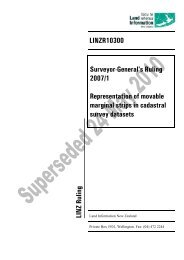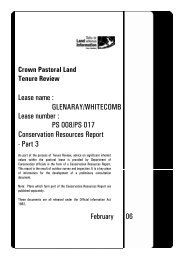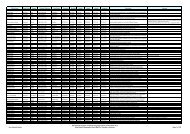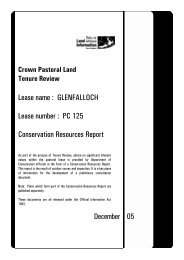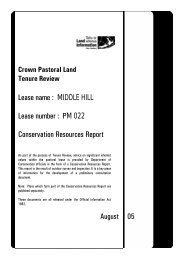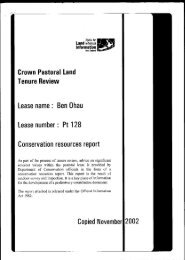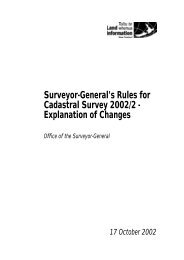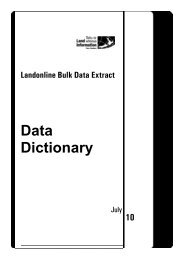Crown Pastoral-Tenure Review-Lake Hawea-Conservation ...
Crown Pastoral-Tenure Review-Lake Hawea-Conservation ...
Crown Pastoral-Tenure Review-Lake Hawea-Conservation ...
Create successful ePaper yourself
Turn your PDF publications into a flip-book with our unique Google optimized e-Paper software.
RELEASED UNDER THE OFFICIAL INFORMATION ACT<br />
No fish recorded within these streams and invertebrate numbers were low. However the<br />
invertebrates present (Mayflies; Deleatidium, Nesameletus) are indicative of good water<br />
quality.<br />
Breast Creek:<br />
Breast Creek and its tributaries are of lower gradient than those streams that flow into <strong>Lake</strong><br />
<strong>Hawea</strong>. Breast Creek has a stable substrate with cobble type substrate dominating the bed<br />
profile.<br />
The riparian margins are of grass-shrubs and in the upper reaches tussock, which provide<br />
good bank stability with few signs of erosion. Three species of fish present: introduced<br />
brown trout, and two native species, koaro (Galaxias brevipinnis) and the non-migratory<br />
Galaxias sp D. The lower section of the main stem of Breast creek produced high numbers<br />
of brown trout and one Koaro.<br />
A healthy population of Galaxias sp D was found in small pools, in a small 1m wide tributary<br />
of Breast Creek at site location G40: 223192. Its substrate type was boulder/ cobble which<br />
provides for a stable bed. A substantial waterfall half way up this tributary appears to be a<br />
barrier for fish access to the headwaters, as no fish were recorded above it. This population<br />
will be exposed to trout predation and competition in the lower section. Galaxias sp D are<br />
probably confined to a reach with a maximum length of 2 kilometres.<br />
Significance of freshwater fish fauna:<br />
Galaxias sp D is ranked ‘Nationally Vulnerable’ (Hitchmough, 2002) and is the fourth rarest<br />
fish in New Zealand. This species occurs in the Clutha River catchment and areas of the<br />
Catlins District. The species occurs as four clusters of populations; from Bannockburn<br />
upstream in tributaries of the Clutha and Lindis Rivers at Queensberry and in around the<br />
Chain Hills (Lindis); a small number are known from Rough Ridge; the tributaries in the mid<br />
reaches of the Pomahaka River; and a group in the Catlins, Tahakopa and possibly the<br />
Mokareta Rivers. Genetic data indicates that the different clusters, while all part of the<br />
Galaxias sp D group, are distinct. Protection of populations throughout its range is required<br />
to preserve the present genetic diversity.<br />
A large, probably resident population of brown trout is present in Breast creek.<br />
Koaro are not considered threatened. This species is widespread around New Zealand and<br />
shows some ability to co-exist with trout, although at reduced densities. It can be found long<br />
distances inland, and landlocked populations are often found in sub-montane lakes and alpine<br />
streams at high elevation. It favours clear, swiftly flowing, boulder-cobble streams of small to<br />
moderate size, and is often occurs in waterways draining tussock and forest areas.<br />
2.5.5 PROBLEM ANIMALS:<br />
Rabbits have historically been a problem on this property, particularly at lower altitudes.<br />
Over most of the property numbers are now very low, except for the lake faces and gullies<br />
where moderate numbers are present.<br />
DOCDM-372005 <strong>Lake</strong> <strong>Hawea</strong> CRR - Info.doc 24






